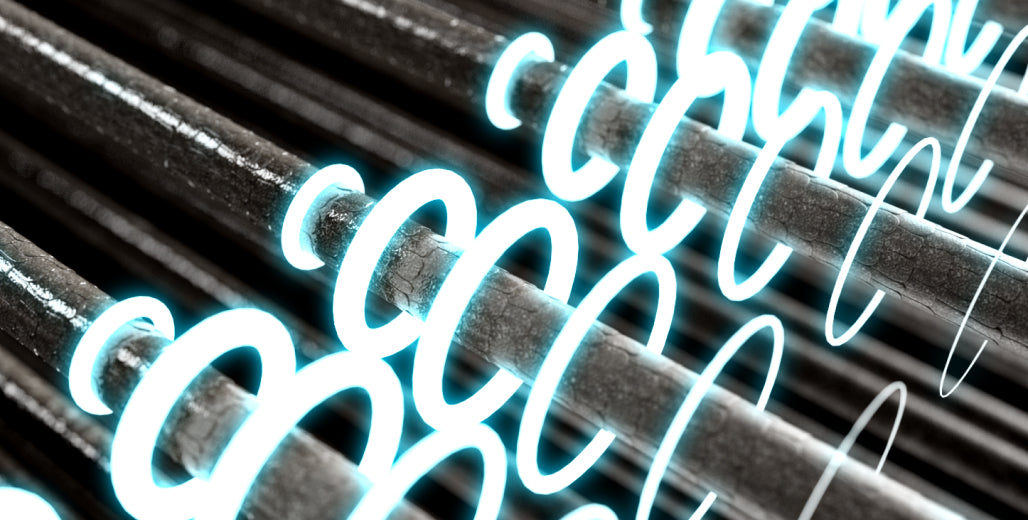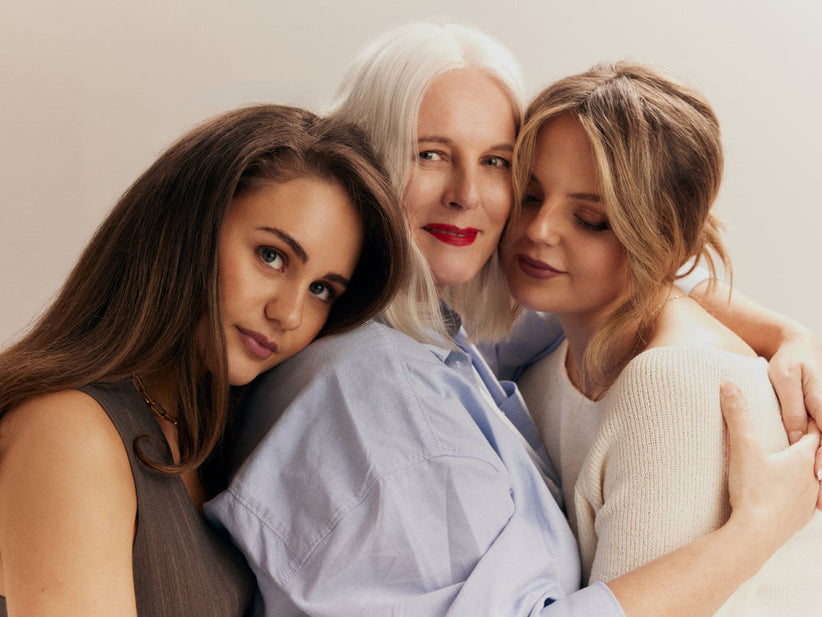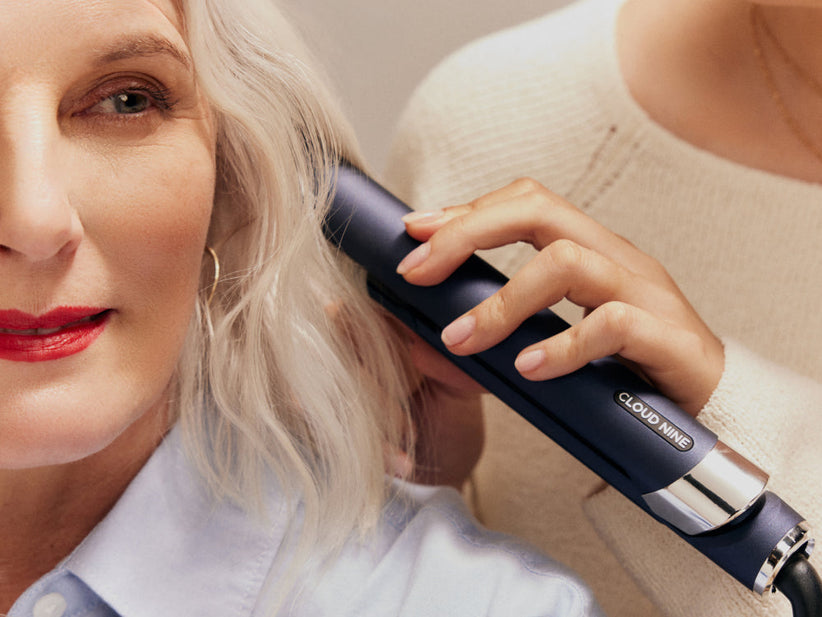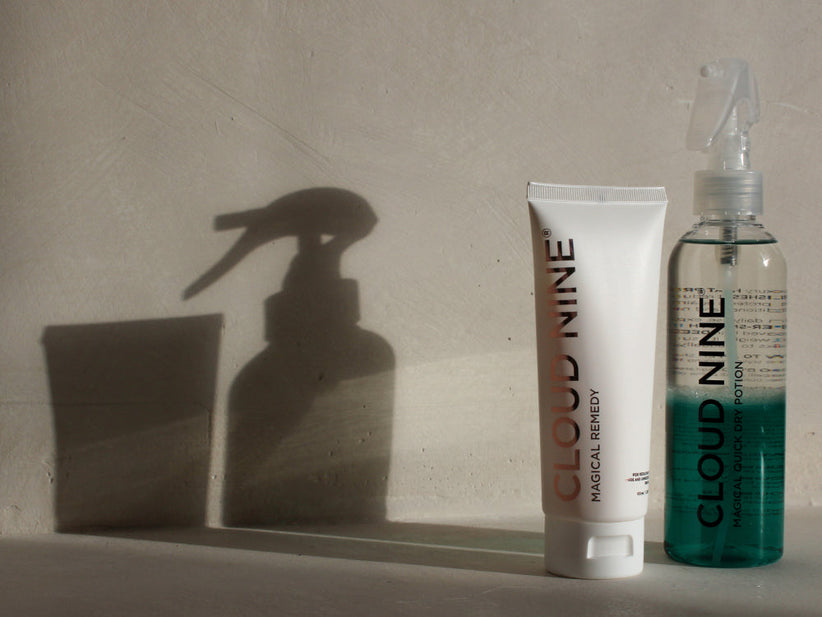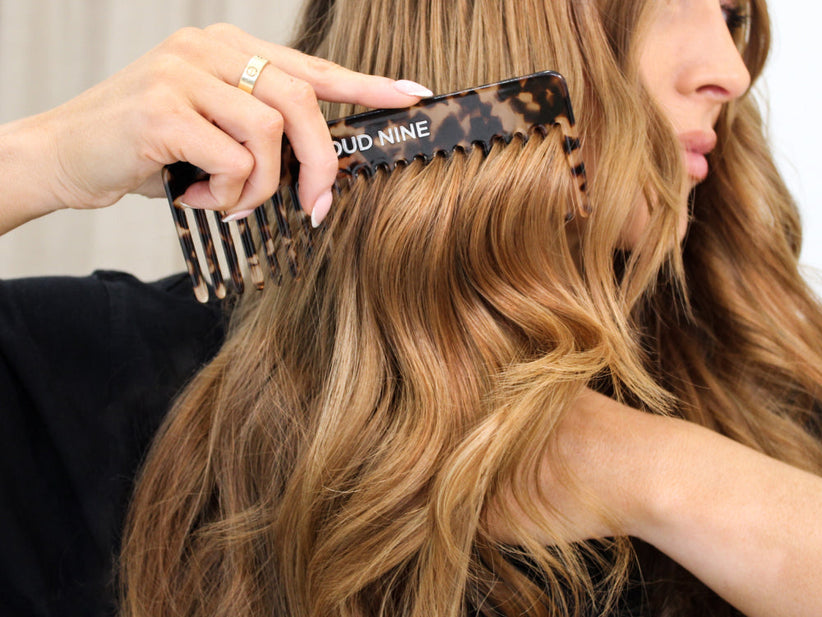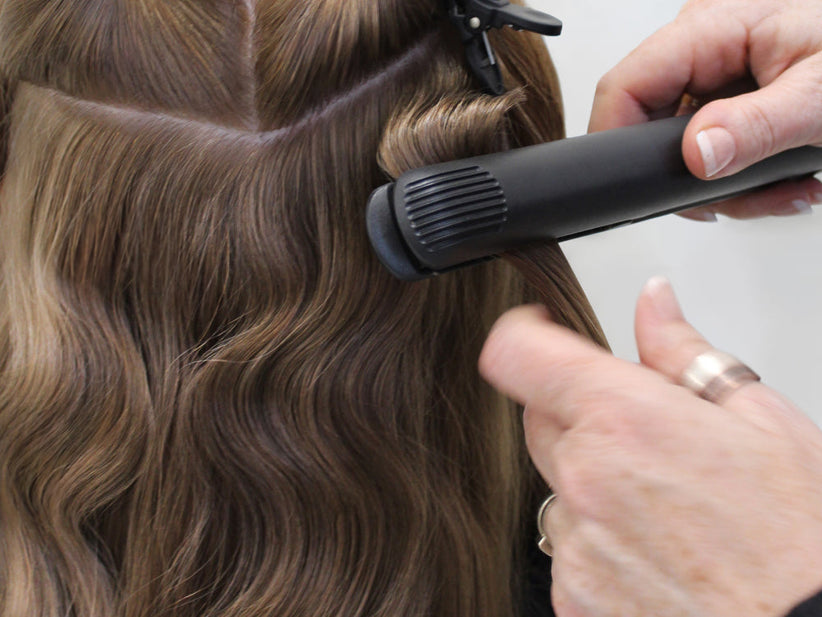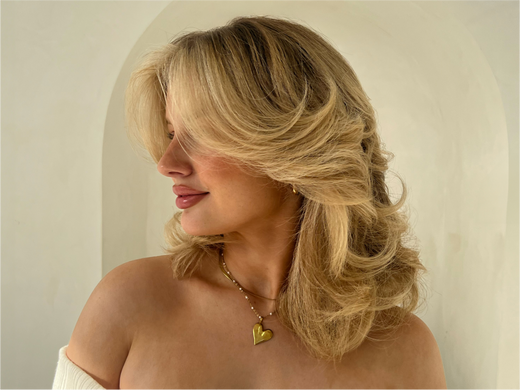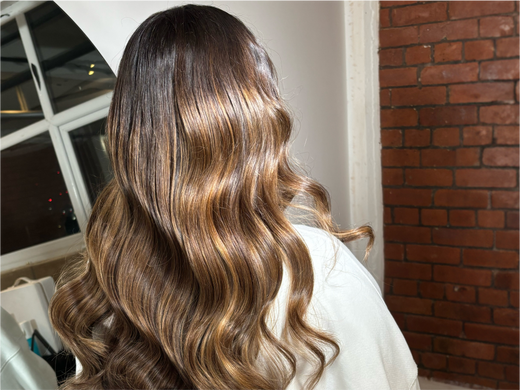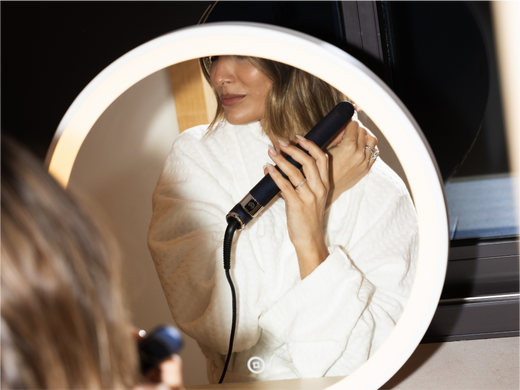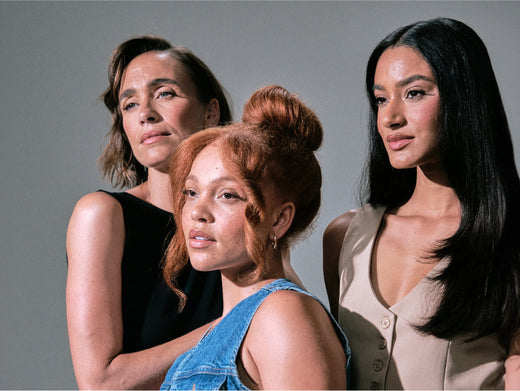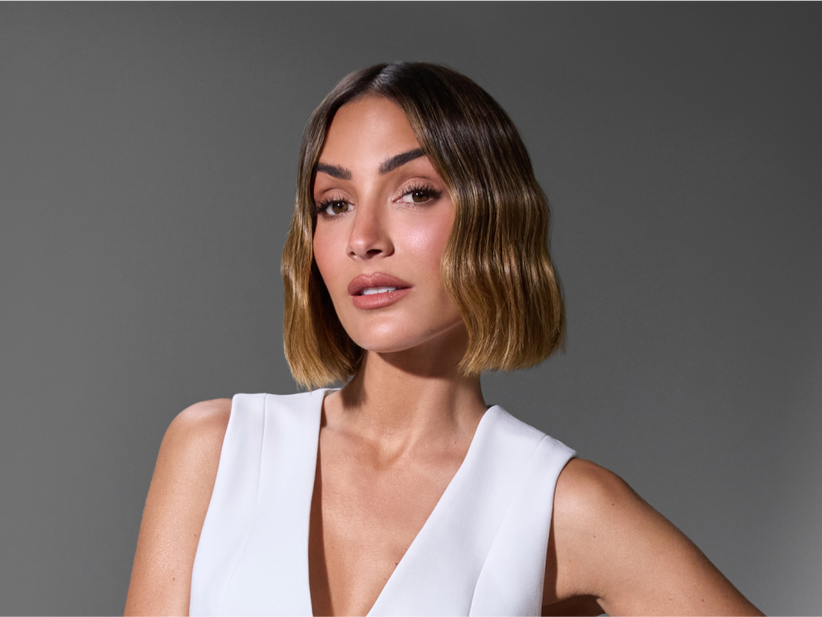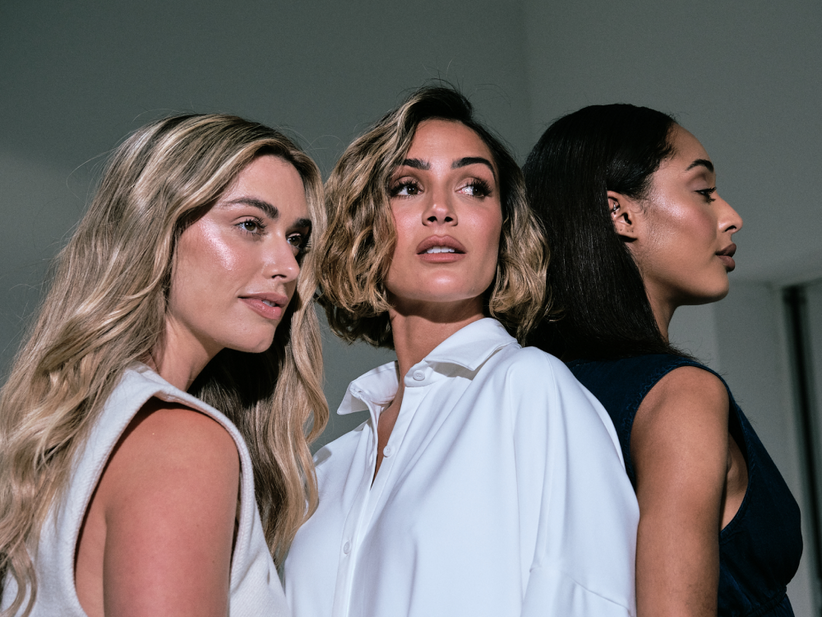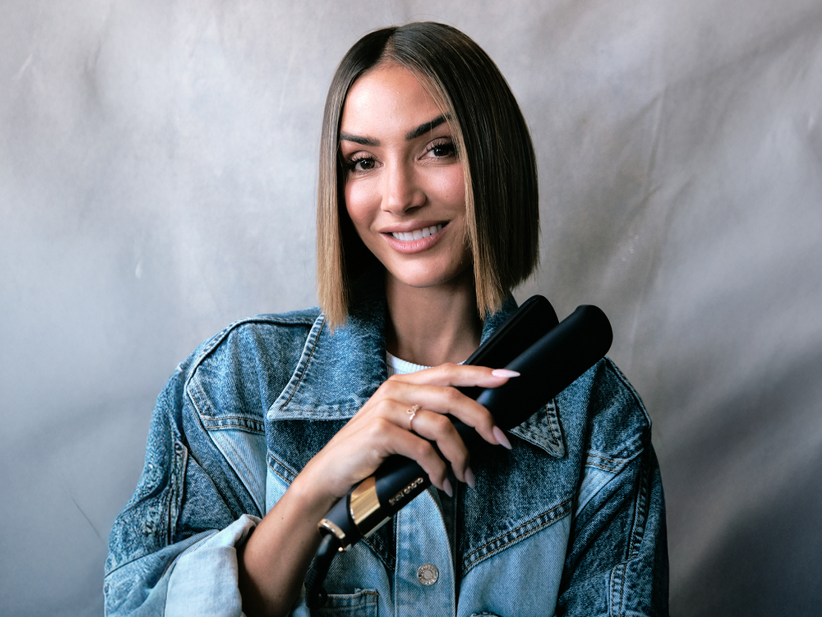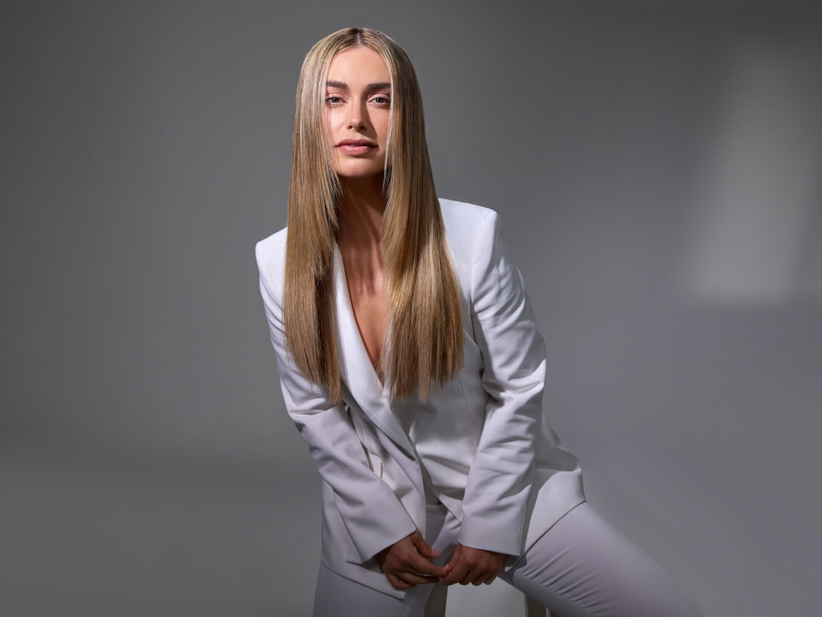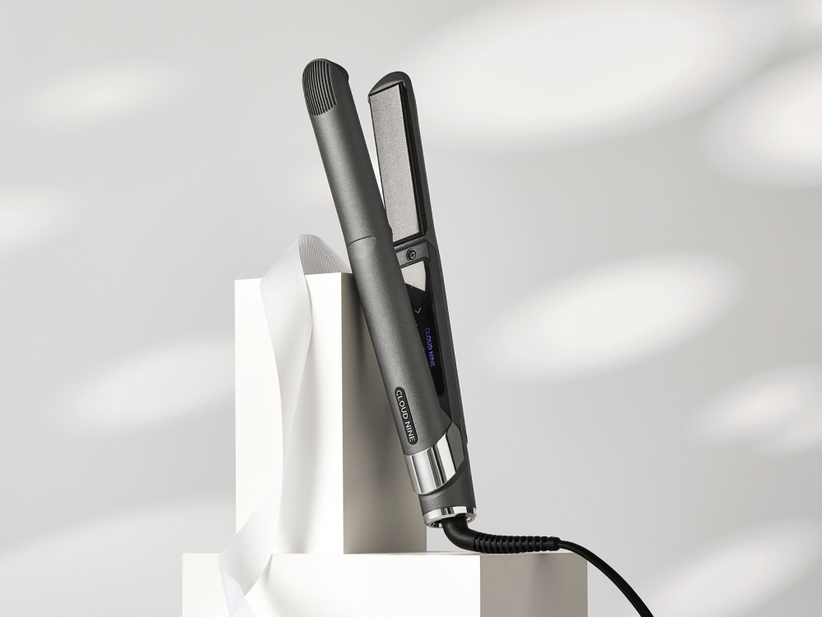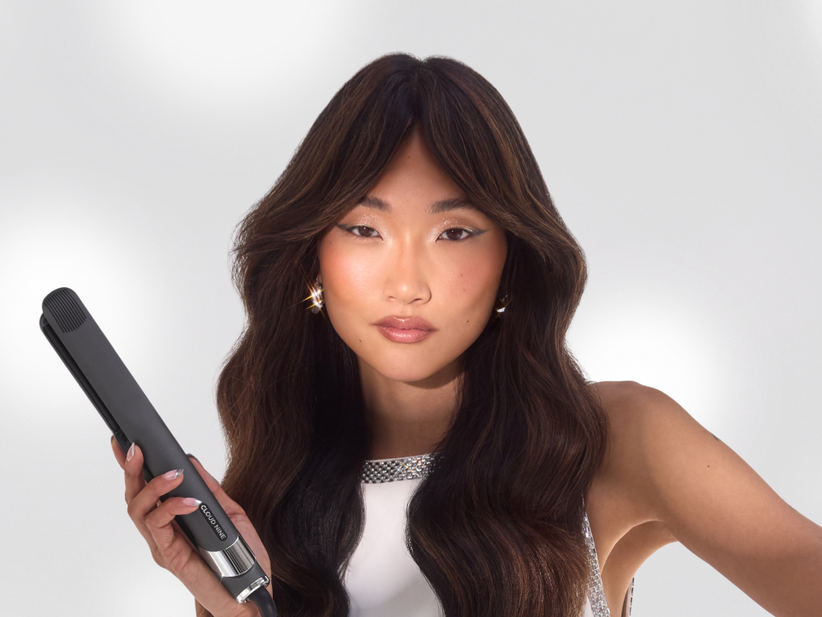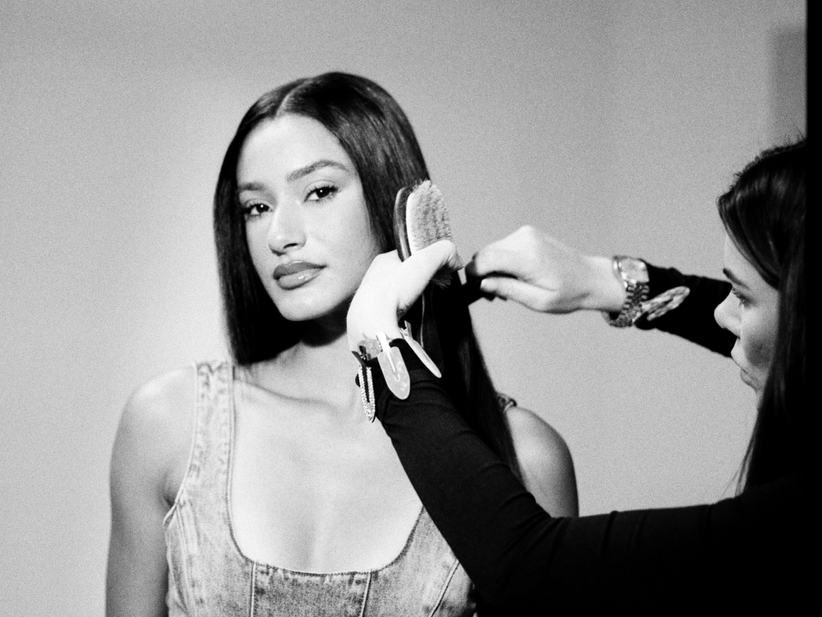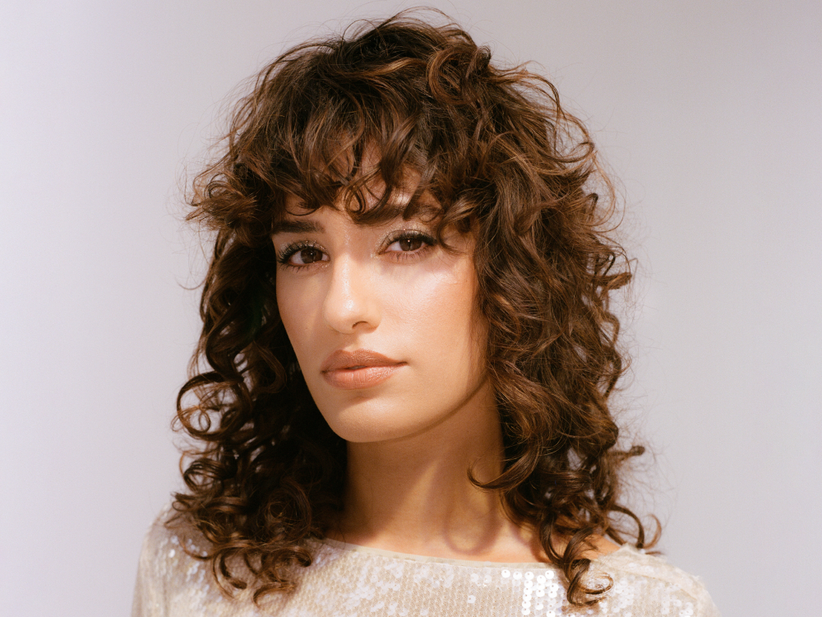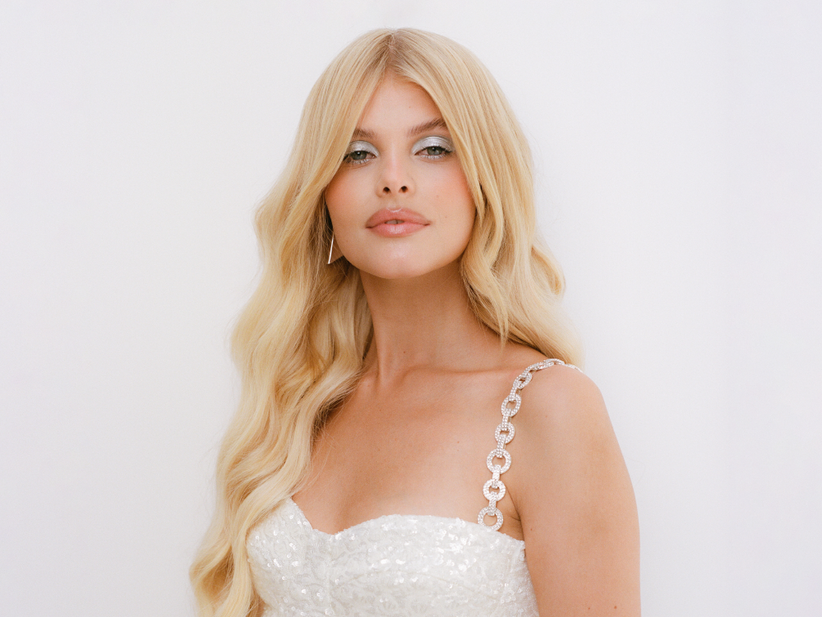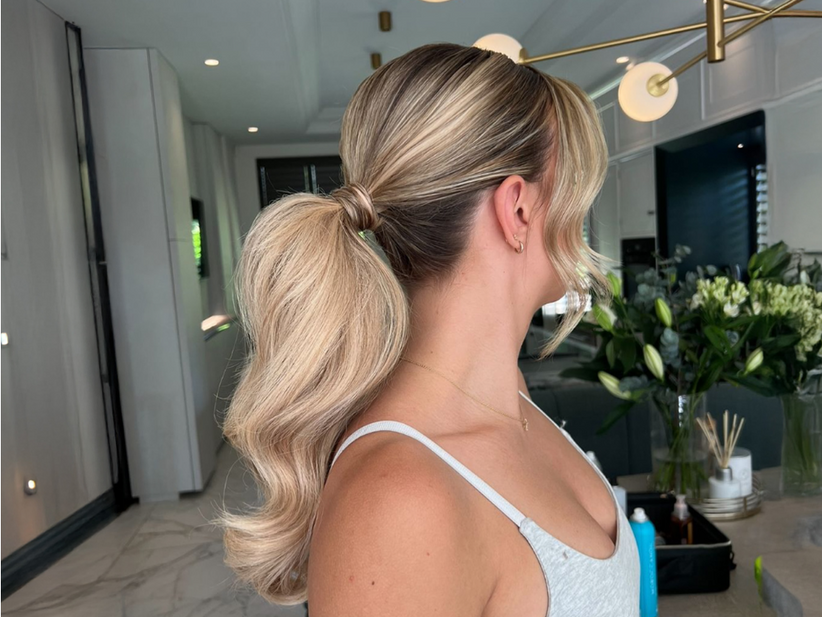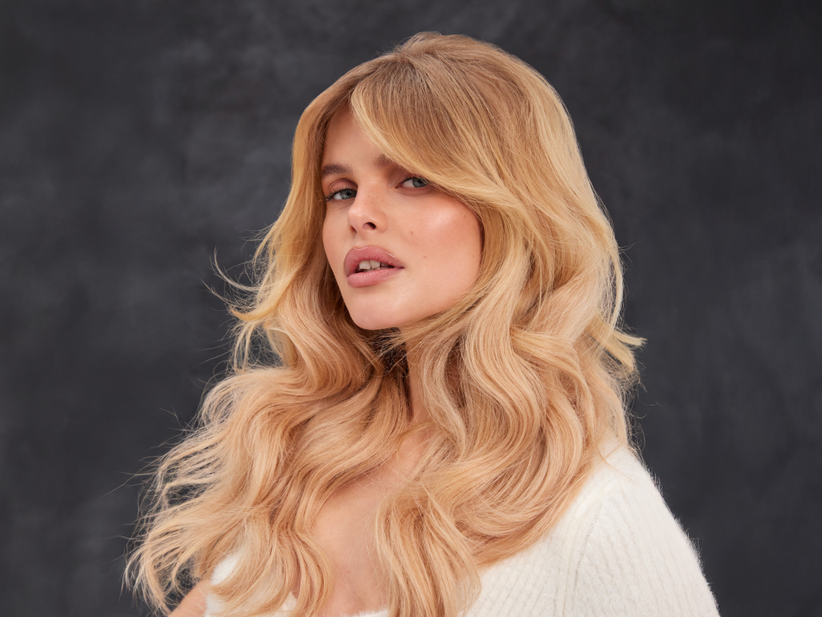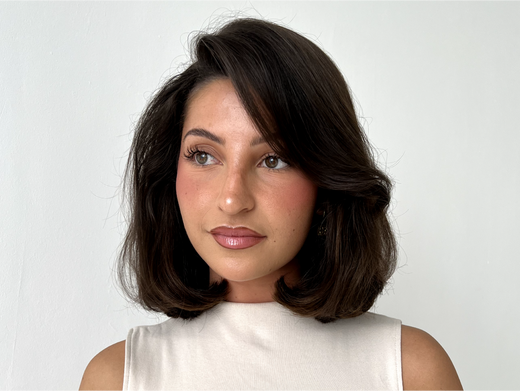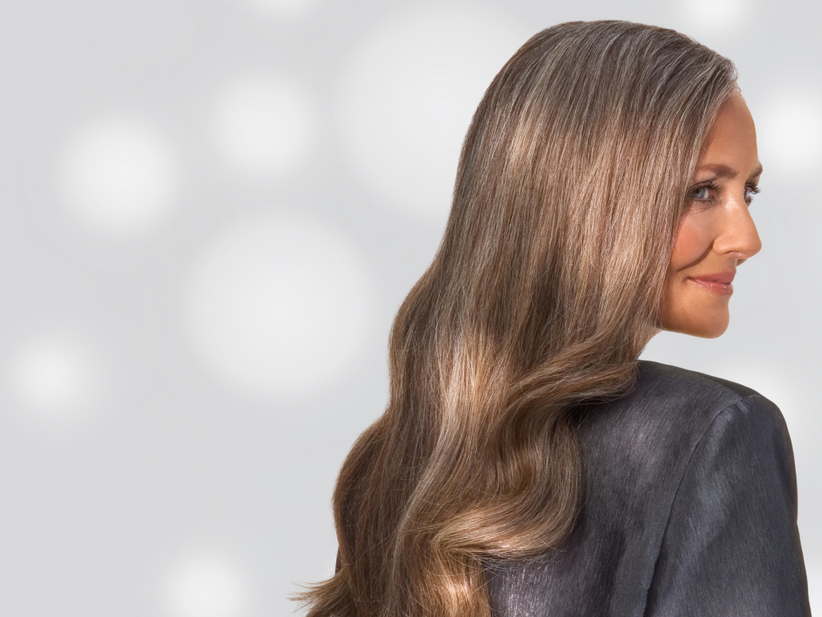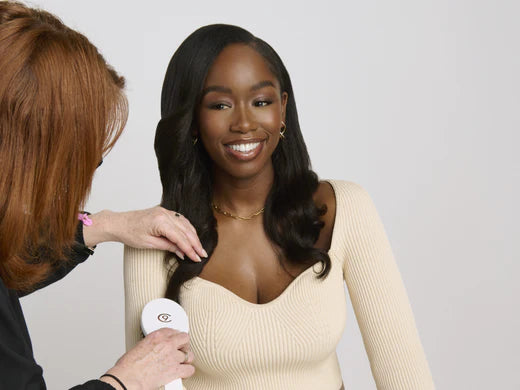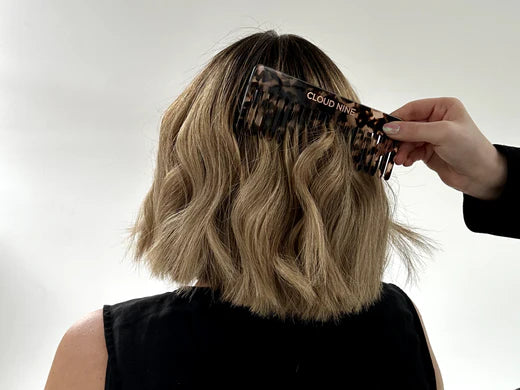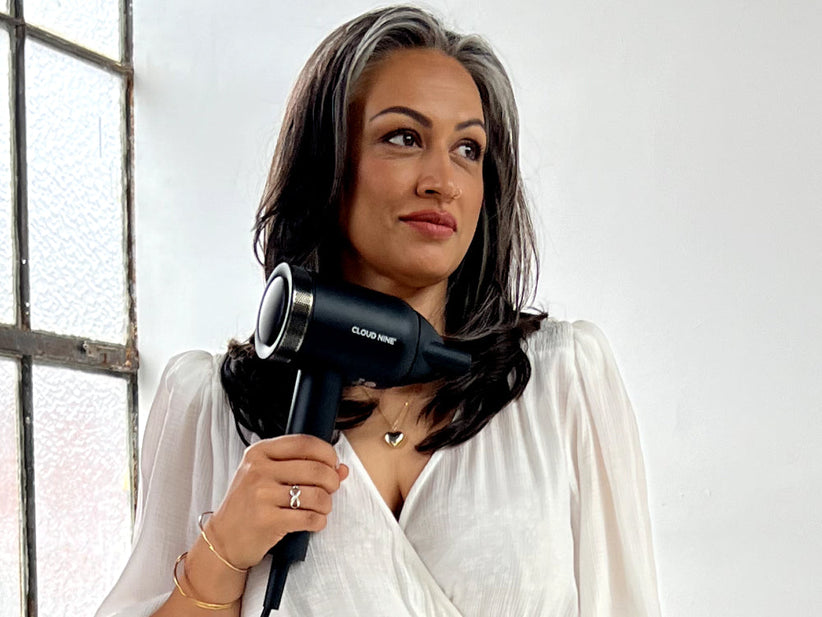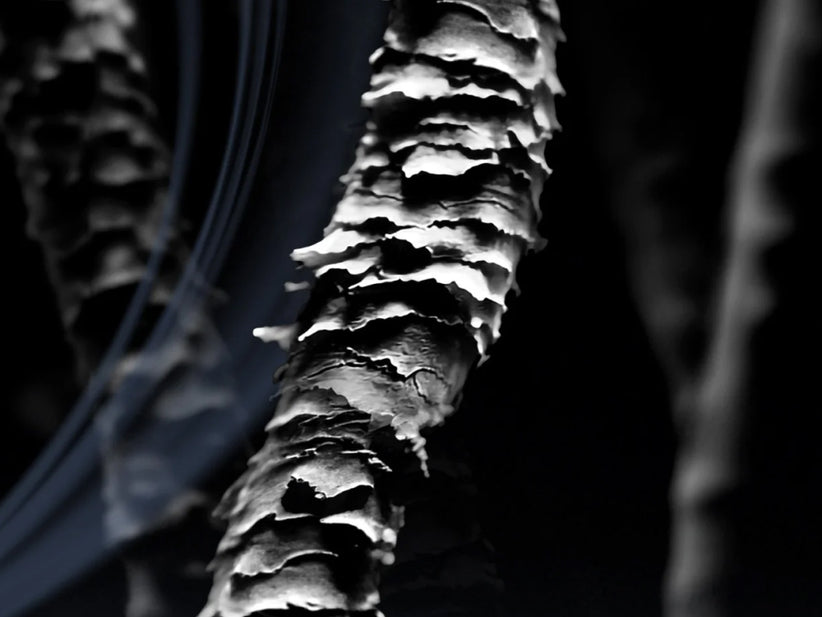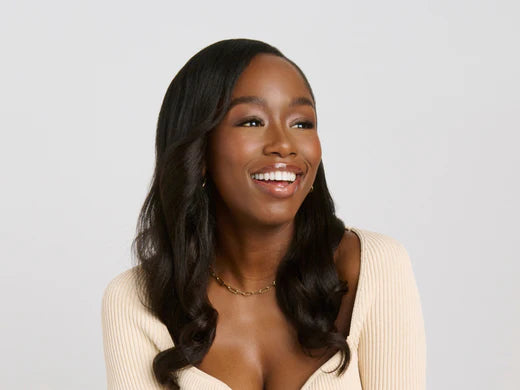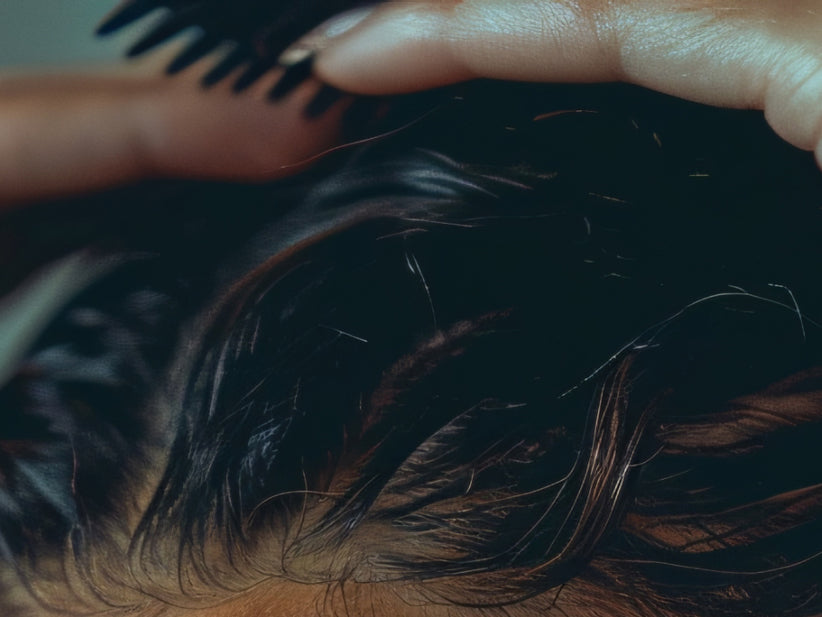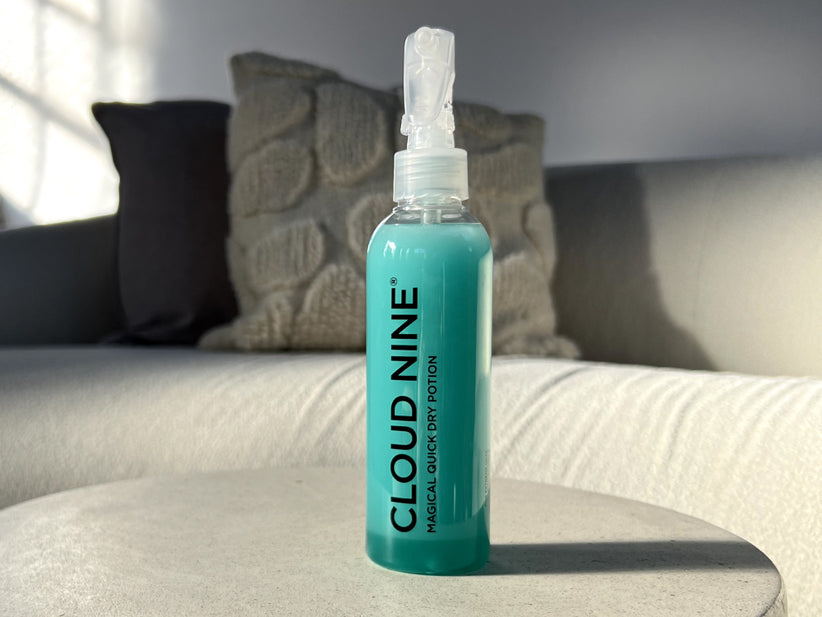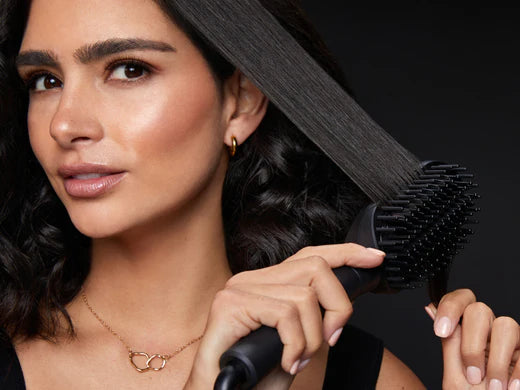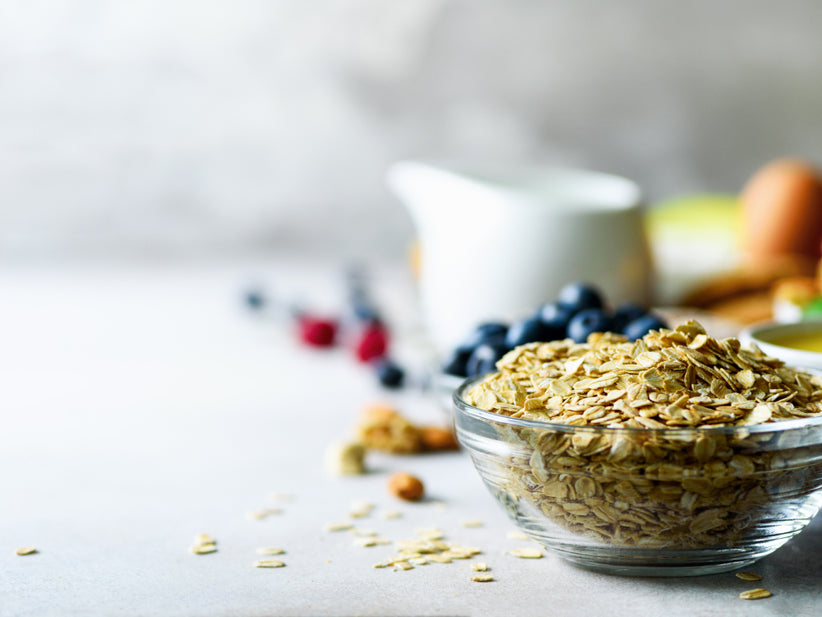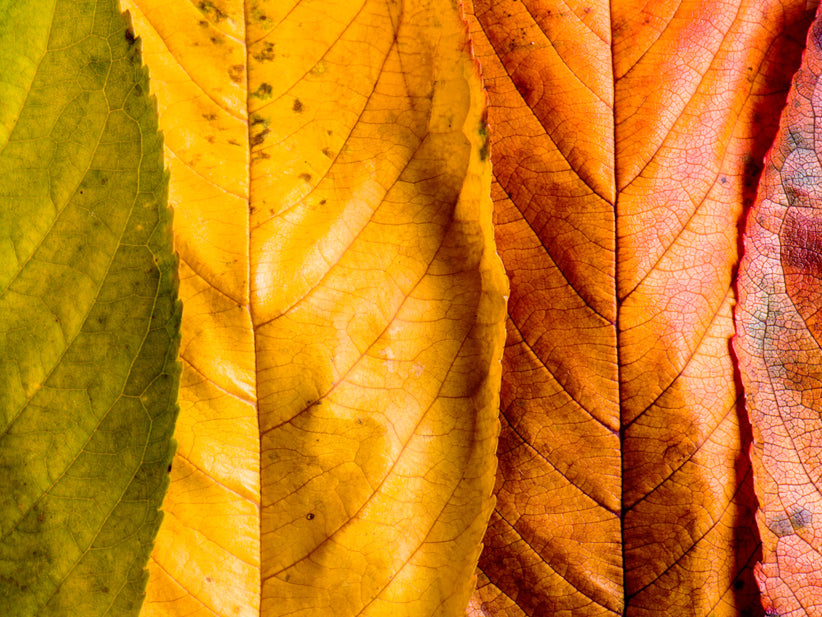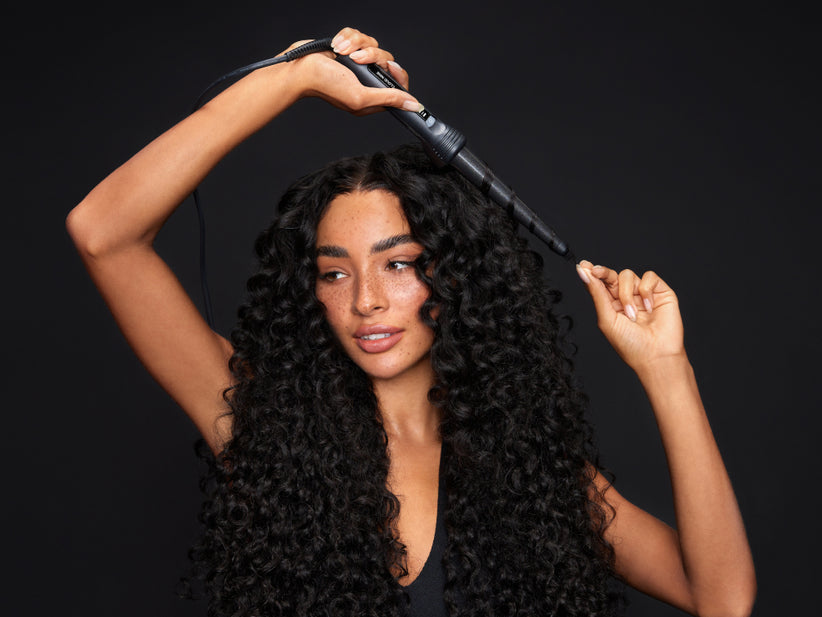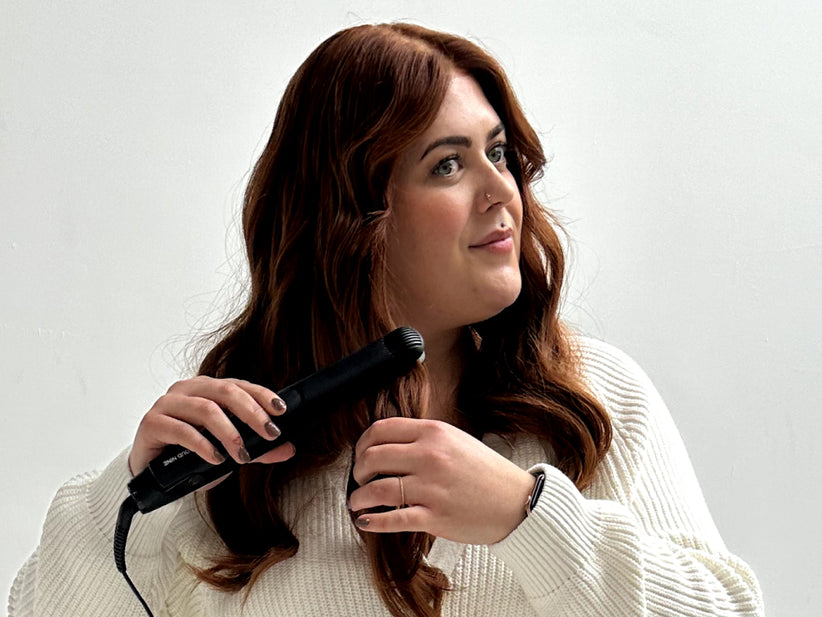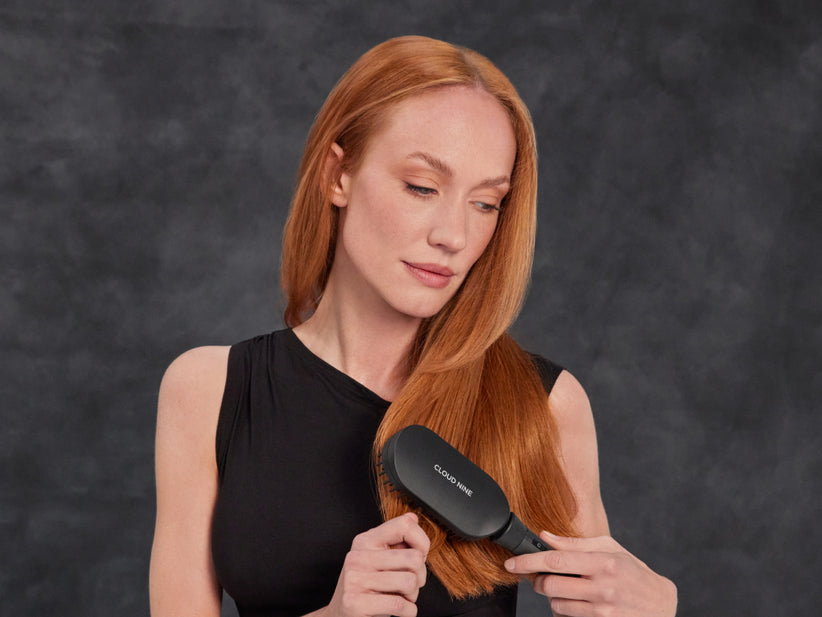The average person has around 100,000 hair follicles on their scalp. For such a prolific organ, many of us know very little about our follicles and the hairs they produce.
When it comes to maintaining healthy and happy hair, knowledge is the key. This guide will take you on a deep dive into the science of hair, putting you in the know on hair growth, texture and condition, so you can keep yours looking and feeling luscious.
From getting your head around the jargon to using science to hack your haircare routine, we’ll help you find your hair’s happy place through science made simple.
THE SCIENCE OF HAIR: KEY TAKEAWAYS
- Hair is made up of a follicle and shaft – each of which has three distinct parts with their own functions.
- Hair’s texture and curl pattern are determined by the shape of the follicle, the chemical bonds that join its proteins, and the internal structure of the hair shaft.
- Hair is made up of proteins, water and micronutrients, and is kept moisturised by sebum.
- The hair growth cycle has four stages, which different hairs are in at different times, keeping your scalp full of hairs at all times.
- Hair plays a vital role in protecting the scalp from UV rays and helping our body maintain a healthy temperature.
- There are four main hair type categories, each varying in their pattern, texture, and care needs.
- The ageing process naturally leads to hair loss, thinning, and loss of pigment.
- Our expert tips can help you unlock a healthy heat styling routine.
- Dandruff, split ends and hair loss are fairly common hair problems with a range of solutions.
- Navigating haircare ingredients can feel like a minefield. Our quick run-down of some of the most common will help you read shampoo bottles like a pro.
- Just like the rest of our body, hair health starts from the inside with key nutrients for a thriving scalp.
HAIR STRUCTURE
Hair strands are essentially threads of protein that grow from small pockets located just below the skin of the scalp, called follicles. The thickness of each strand varies from person to person and between hairs on the same head, but everyone has approximately 100,000 productive follicles, responsible for keeping the hair full, thick and luscious.
The hair follicle
All hair starts its life at the follicle, which has a three-part structure:
- The bulb – This is the base of the follicle where hair growth begins.
- The dermal papilla – This provides nutrients to growing hair to keep it strong and healthy.
- The sebaceous gland – This produces sebum, the natural oil your hair needs to remain moisturised and shiny.
The point at which your hair attaches to the follicle is the only part of the hair that is actually ‘alive’ and growing, so it’s no surprise that a thriving scalp filled with fresh follicles is the first step to happy, healthy hair. Discover how to nourish and nurture yours with our Scalp Care Rituals: A Guide.
The hair shaft
Hair is a strong fibre, but is highly absorbent so can become damaged easily without gentle care.
The hair shaft is a tiny but complex structure, formed of three layered parts:
1. The Medulla
This soft, hollow shaft forms the centre of a hair strand. It is made up of keratin fibres – a type of protein. It also contains air spaces responsible for determining the hair’s thickness. The medulla is only present in thick and coarse hair types, while naturally blonde and fine hair lacks it.
2. The Cortex
The next layer – surrounding the medulla – is the cortex. This comprises most of the hair’s mass and is made of more structural proteins and melanin – which gives our hair its unique colour.
3. The Cuticle
The cuticle is the outer layer of the hair. It surrounds and protects the cortex, and, when healthy, is responsible for your hair’s shiny appearance. Despite this, its cells are dead and resemble microscopic overlapping fish scales. These usually lie flat but can lift under certain conditions, including temperature changes.
HAIR PHYSIOLOGY
Contrary to popular myth, the hair’s cuticles do not open and close. Instead, they expand and contract, creating narrower and wider gaps that determine how much moisture is absorbed or lost by the hair. You can think of this as similar to your skin’s pores.
How hair’s pattern is made
The pattern of your hair is determined by:
- Follicle shape
Round follicles produce straight hair, while more oval-shaped ones are responsible for waves. Curls often grow from more elliptical or asymmetrical follicles.
- Disulfide bonds
Disulfide bonds are what join keratin proteins in the hair shaft, and their frequency creates hair’s curl pattern. Curl hair has more disulfide bonds compared to straight.
- Hair shaft structure
The internal structure of the hair shaft can also influence curl patterns. In curly hair, the cortex is distributed unevenly around the medulla, causing the hair to bend into a curl.
Hair's chemical make-up
Hair is made up of a delicate balance of chemical building blocks. This includes:
- Proteins
Proteins make up about 65 to 95% of the hair, acting as the building block of its structure. Keratin is your hair’s main protein and is responsible for giving it strength.
- Water
Like all parts of your body, your hair needs water to survive and thrive. Without water, essential nutrients like proteins, vitamins and iron cannot be delivered to your hair follicles. Staying adequately hydrated ensures your hair strands stay moisturised and shiny, and your scalp produces the right amount of sebum.
- Micro-nutrients
While they make up a much smaller aspect of the hair, micro-nutrients such as zinc, iron, copper, iodine and aluminium are all vital to building strong, healthy hair.
- Sebum
Sebum is the natural oil your body produces to maintain a perfect moisture balance on your hair and skin. This protects it from breakage and leaves it looking shiny and sleek. When the scalp produces too much sebum, hair looks greasy. This can happen naturally due to hormonal changes or can be due to other conditions such as being dehydrated.
Hydration and nutrition are essential components of a healthy scalp and luscious hair.
THE HAIR GROWTH CYCLE
Hair doesn’t grow constantly and consistently. Building new hair is a slow process that follows four phases:
1. Anagen phase
The anagen phase is a time of growth and can last anywhere from two to seven years, but more commonly falls between three and five depending on the available nutrients and other conditions. During the anagen phase, the cells in the hair bulb, within the follicle are rapidly dividing, resulting in hair growth of approximately 1cm every 28 days. The length of this growing phase determines the maximum length your hair is capable of growing to. About 85-90% of the hairs on your head are typically in the anagen phase at once.
2. Catagen phase
Catagen is a short transitional phase that marks the end of active hair growth and lasts about two to three weeks. During the catagen phase, the hair follicle shrinks and detaches from the cells that produce new hair, cutting the hair off from blood supply, and slowing hair growth. At any given time, less than 5% of the hairs on your head are in the catagen phase.
3. Telogen phase
The telogen phase is a time of rest. The hair that was grown in the anagen phase is fully formed and no longer grows, but remains attached to the follicles. Meanwhile, while the old hair rests, new hair begins to grow underneath. Approximately 10-15% of your hairs are in the telogen phase at once.
4. Exogen phase
The fourth and final stage of the hair growth cycle is the shedding phase, which overlaps with the telogen phase. This is known as exogen and sees individual fully formed hair strands released from their follicles over two to five months. As this happens, new hairs continue to grow. It is normal to lose 50 to 100 hairs a day during the exogen phase. Discover how hair loss relates to hormones.
The hairs on your scalp are all in different phases of the cycle simultaneously. This staggered timing ensures that you don’t lose all your hair at once, allowing for a consistent overall appearance of hair growth and renewal.
Thanks to this cycle, it is normal to shed hair regularly – you’ll probably notice it on your hair brush, or in your shower drain when you wash your hair. Throughout the year, this can fluctuate in amount, with more hair fall in the autumn and spring months. Learn more about seasonal hair loss.
THE FUNCTION OF HAIR
Our hair doesn’t just contribute to our appearance – it has an important purpose, too.
Sun protection
A full head of hair helps to protect your scalp from UV rays. Since your head is closest to the sun, leaving it uncovered risks sunburn and the long-term damage and cancer risks associated with excessive sun exposure.
Temperature regulation
Some studies show that, like the hair on our bodies, head hair plays a vital role in helping the body and brain to maintain a healthy temperature. As well as minimising solar heat gain by protecting from the sun in hot conditions, the hair on our heads can help to trap heat close to the head and face in cold conditions.
Identity and confidence
Beyond its physiological purpose, hair has important social value and meanings. In many cultures, the way head hair is worn, styled, and treated is a marker of health, beauty, status, and even religious and political beliefs. Even without these direct associations, hair forms a core part of our identities and is one of our most recognisable features.
Caring for our hair – whether you like to get creative or prefer a low-maintenance approach – is a foundational part of most people’s daily routines. Understanding the science behind our hair can help us to nurture it and get it looking its best.
HAIR TYPES AND TEXTURES
Your hair is as unique as you are. Your hair at its healthiest will look completely different from anyone else.
While there are many unique hair types, ranging from type 1A to type 4C, your hair will fall into one of these four loose categories:
- Straight – Type 1 hair is often fine and has little volume. It needs a light touch when it comes to conditioning, as excessive product can weigh it down and cause the scalp to become greasy.
- Wavy – Type 2 hair is often thicker and has more body and texture to it. It can be slightly prone to frizz and dryness, so a gentle hand and regular, lightweight conditioning are essential.
- Curly – Type 3 hair has more volume and a defined and noticeable natural curl. Deep conditioning is essential for maintaining type 3 hair’s gorgeous texture.
- Coily – Type 4 hair falls in tighter ringlets or coils and is packed with volume. This type of hair craves moisture and can be prone to frizz if it’s allowed to dry out. This fragile hair type benefits from some extra TLC, including regular deep moisture treatments like CLOUD NINE’s Magical Remedy.
Hair types generally vary with race, geography, and genetics, but there are other factors in play too. Here’s how to find out your hair type.
Every different hair type responds to heat styling differently – some are fragile and require a low setting, while others are resilient and can handle turning it up a little higher. To find the perfect temperature for your hair, try the CLOUD NINE Temperature Calculator.
Did you know?
Red hair tends to be much more fragile than other colours – regardless of whether it’s curly, wavy, straight or coily.
AGE AND HAIR
Like most parts of our bodies, hair changes with age. From hormones to pigment, the ageing process has a range of impacts on our hair’s condition and appearance, including:
Hair loss and thinning
As we age, our body’s hormone production fluctuates, which can result in hair loss and/or thinning in both men and women. For women, this is most common around the time of perimenopause and menopause, when oestrogen production falls.
Discover more about menopausal hair loss and what you can do about it.
Hair loss and thinning with age can also be due to follicles shrinking and cell reproduction becoming less accurate. To put it simply: each time a follicle creates a new cell, it copies the DNA from the last cell created. Over time, this process becomes less efficient and accumulates genetic errors, sometimes leaving old follicles unable to produce hair at all. Unfortunately, since the cause of this kind of thinning and hair loss is entirely genetic, it cannot be prevented.
Overcome hair thinning with these volumising tips.
Greying
Going grey is inevitable for most people, although the time it happens varies from person to person depending on their genetics and environmental factors.
In short, as we age, our production of melanin – which gives our hair and skin its colour – starts to decline. This lightens the hair that the follicle produces until it eventually turns completely white.
Loss of hair pigment also leaves the hair thinner and more brittle, leaving it more sensitive to UV rays, heat, humidity and chemicals, so it’s important to treat grey and white hair with added TLC, including a much lower heat styling temperature. Find out more in our guide to managing and caring for grey hair.
HAIR AND HEAT
If you crave curls or are addicted to your straightener, you may think heat damage is just the price you have to pay for style – but that couldn’t be further from the truth.
Healthy heat styling is possible, if you follow CLOUD NINE’s three simple rules:
1. Use your hair’s perfect heat
Contrary to popular belief, there is no healthy ‘one-size-fits-all’ styling temperature – everyone’s hair is different. The heat that creates the perfect curl on one person’s type 1 hair, might do serious damage to another’s type 4 hair. Variable Temperature Control is your best friend on the quest for flawlessly styled, healthy hair. Find your ideal heat with our Temperature Calculator, then set up your straightener or curler to deliver optimum results.
2. Always apply Magical Potion
Regardless of your hair type, heat protection is vital to maintaining soft and silky strands with regular heat styling. In just a spritz, CLOUD NINE’s Magical Potion adds shine, reduces drying time, and conditions to prevent flyaways, all while offering the heat protection your hair needs.
3. Switch on Revive Mode™
Revive Mode™ is a favourite feature of our best-selling CLOUD NINE straighteners. Activated over 150°C, its vibrations move the tool’s plates up and down so there’s less contact time on the hair, delivering maximum style with minimum risk of damage. It’s the safest setting for heated hair styling.
With the science of hair under your belt, you’re already on your way to healthier styling. To learn even more about healthy hair care and styling, check out Day 2 of our 9-Day Detox, The Science of Hair Detox.
COMMON HAIR PROBLEMS AND SCIENTIFIC SOLUTIONS
Hair problems are more common than you may think. When something goes wrong with the body, the hair is often the first place to show it. When the immune system is demanding energy and nutrients, the hair, as a non-essential function, loses out.
Poor hair health can be from something as simple as using your heated tools at an excessively high temperature, or something as serious as an underlying illness. We recommend consulting your doctor if you’re worried about any changes to your hair, but here are some common hair health worries, and their solutions:
Hair Loss
Hair loss is also known as alopecia. It’s a common and varied problem with a range of causes from hormonal changes to cancer treatments.
If you’re not going through medical treatment or a big hormonal change like pregnancy or menopause, your hair loss could be caused by stress or wearing tightly-pulled hairstyles which damage the follicles. This is known as traction alopecia.
Dandruff
Dandruff is a common, non-serious type of dermatitis caused by a yeast-like fungus that sees the skin on the scalp flake. It’s often accompanied by either an irritated and oily scalp or excessive dryness. While it isn’t contagious, it can be a source of embarrassment for sufferers.
Luckily, dandruff is easy to treat with medicated shampoos that can be bought over the counter.
Split ends
Split ends are entirely normal and happen to people with all hair types. Usually, they’re an indication that it’s time for a trim. However, if you’ve noticed more split ends than normal, it could be the result of hair damage, such as that caused by rigorous brushing, rough towel drying, excessive heat, tight hairstyles, and a lack of moisture.
Read our guide to how to manage and avoid hair damage to find out if your split ends could be caused by not giving your hair the gentle treatment it deserves.
SCIENTIFICALLY-INFORMED HAIR CARE INGREDIENTS
Just like with skincare, we’re all starting to tune in to the ingredients that make up the products we apply to our hair. From organic to fragrance-free, brands make endless claims about their shampoos, conditioners, masks and serums that can leave you feeling stranded in the haircare aisle. It can be difficult to sort fact from fiction and choose the best product for your hair.
We’ve done the hard work for you, with these quick explanations of common haircare ingredients:
Keratin
As we’ve already explained, keratin is the main protein that makes up hair.
Silicones
Silicone is responsible for providing that signature post-wash shine.
Sulphates
These cleansing agents are the most common in shampoos from low-budget to the most premium brands. While there is some debate about their benefits and drawbacks, they’re the most effective surfactants, offering the thorough cleansing power your scalp needs to remove product and dead skin build-up. Certain ‘natural’ shampoos claim their sulphate-free status makes them gentler on hair, but they may offer less effective cleansing power.
Parabens
You’ll probably see parabens showing up on the labels of most shampoo bottles in the supermarket. These are added to help prevent the growth of bacteria and mould in cleansing products. While they generally don’t have any harmful effects on the user, some people can be allergic to parabens, and experience an irritated reaction or rash.
Argan oil
In recent years, argan oil has become a popular ingredient in conditioning and moisturising serums, masks and treatments – and for good reason. This natural oil can enrich the scalp and promote hair growth, as well as reduce damage to your strands by offering them strength and shine.
Collagen
Remember when we said hair is mainly made of keratin proteins? Well, collagen is also a protein. It’s made of amino acids, just like keratin, so using haircare products that contain collagen can help fuel your hair’s keratin production, helping it to grow longer and stronger.
Alcohol
When we see alcohol in an ingredient list, it feels like a red flag for dryness and dehydration. Here’s a heads up - cetyl and stearyl alcohols are some of the good ones. These alcohols are emollients, which means they create a moisturising layer on top of your hair strands to prevent moisture loss that can leave the hair dried out and prone to breakage.
Ceramides
Looking for even more strength? Choose shampoos and conditioners that contain ceramides. These are conditioning agents that lock in nutrients to the hair shaft, building a protective layer to keep the hair moisturised and prevent that dry, brittle feeling that often accompanies frizz.
For help building a scientifically-informed hair product repertoire that works for you, read our 9-Day Revival Hair Blog.
THE ROLE OF NUTRITION IN HAIR HEALTH
If you’ve ever heard the saying “beauty is more than skin-deep”, the same goes for hair. Nourishing our hair and scalp is about more than just slathering on the right haircare products. Nutrition is just as important.
For your full guide to nutrition for shiny, thriving hair, check out our guide about how to nourish your hair from the inside out.
For now, let’s take a quick look at the most important nutrients to consider when crafting a hair-healthy diet.
Proteins
Found in: Meat, fish, poultry, eggs, dairy, nuts and legumes.
Responsible for: Forming hair’s structure, strength and growth.
Vitamins
Found in: A varied diet of fruits, vegetables, nuts, seeds and legumes.
Responsible for: Healthy growth, moisturisation and circulation.
Iron
Found in: Meat, fish, poultry, fortified cereals, pulses, and spinach.
Responsible for: Preventing hair thinning, promoting fast and healthy growth and hair strength and shine.
Water
Found in: Drinks and other liquid foods – although pure water is best.
Responsible for: Hydration from scalp to tip.
Learn more about the importance of hair hydration.
Omega-3 fatty avids
Found in: Oily fish, nuts and seeds.
Responsible for: Promoting scalp health and hydration.
THE SCIENCE OF HAIR: FREQUENTLY ASKED QUESTIONS
Does cutting hair make it grow faster?
Cutting your hair does not make it grow faster. Hair only grows from the root, which means the ends of your hair (which are cut when you go for a trim) are technically dead. That being said, regular trims are a recommended part of keeping your hair in good condition, as they remove split ends that if left alone, could lead to further breakage.
Is hair growth rate determined by genetics?
Genetics are one factor in determining the growth rate of your hair. Other factors that have an impact include your sex, age, and hair and scalp health.
Does plucking one grey hair make more grow?
The short answer is no. Each follicle is only capable of growing a single hair at once, so plucking one grey hair will only result in one new grey hair growing in its place. This one is a popular myth amongst those who are scared of going grey. We say embrace the greys. To learn more ways to style your grey hair and unlock your confidence, check out our guide to styling and caring for grey hair.
What’s the lifespan of a hair?
A single hair’s lifespan can last anywhere between two and seven years depending on factors including hair and scalp conditions, genetics, health and hormones.
Does hair have feelings?
While hair itself does not contain nerve endings, so cannot ‘feel’ in the same way skin does, research shows that hair follicles play a unique role in touch sensitivity. Sensitivity nerve fibres wrap around the hair bulb, and certain cells in the follicle release histamines and serotonin when touched. These are responsible for the pleasant feelings when someone plays with your hair, and the not-so-pleasant feelings when your hair is pulled. Just another reason to give your hair and scalp the TLC they deserve.
What grows quicker, hair or fingernails?
In general, hair grows faster than fingernails or toenails. For most people, head hair grows roughly ¼ to ½ inch per month, or up to 6 inches per year, while fingernails grow approximately 1/8 inch per month.
What’s the rarest hair type?
Type 1A hair is the rarest hair type. This fragile, fine, and often very fair hair type is very straight, resistant to heat styling, and often has a wispy appearance.
What’s the most fragile hair type?
Fine hair is the most fragile. This can fall under several different hair types and colours but is the most susceptible to heat damage if excessive heat is used, or breakage caused by friction and rough handling.


.jpg?v=1724142040589)


.jpg?v=1724140515432)
